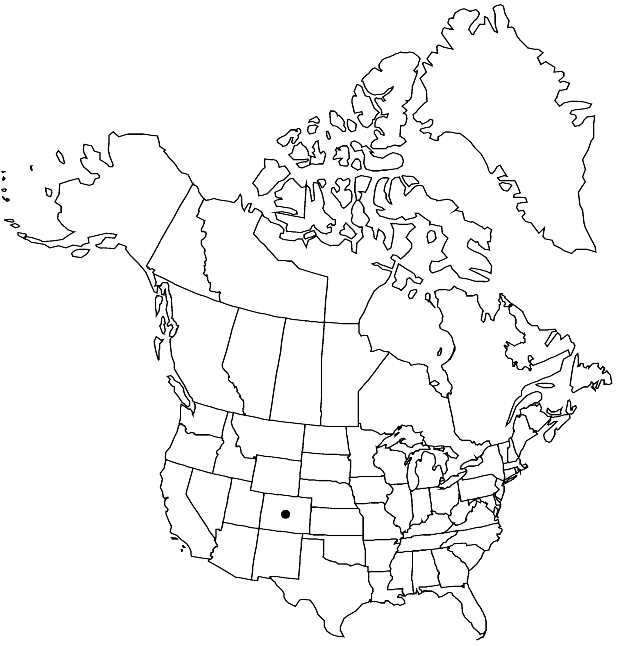Thelypodiopsis juniperorum
Fl. Rocky Mts. ed. 2, 1123. 1923.
Annuals; (glaucous), pilose throughout or at least basally, or glabrous distally. Stems (simple or few to several from base), branched distally, 1.5–10 dm, (pilose basally). Basal leaves (soon withered); rosulate; petiole 0.5–2.5 cm; blade oblanceolate, 5–15 cm × 10–20 mm, margins entire or dentate. Cauline leaves sessile; blade oblong, base auriculate to amplexicaul, margins entire. Racemes slightly dense. Fruiting pedicels horizontal to divaricate-ascending, often straight, 7–20 mm, (glabrous or sparsely pilose). Flowers: sepals erect, purple, 5–7 × 2–3 mm; petals purple, suborbicular to broadly obovate, 14–17 × 5–9 mm, claw 4–7 mm; median filament pairs 4–7 mm; anthers linear, 3–4 mm; gynophore (slender), 3–6 mm. Fruits erect to ascending, straight, torulose, 5–9 cm × 1–1.2 mm; style cylindrical, (slender), 2–3 mm; stigma 2-lobed. Seeds ca. 1.5 × 0.9 mm.
Phenology: Flowering May–Jun.
Habitat: Pinyon-juniper woodlands, sagebrush communities
Distribution

Colo.
Discussion
Of conservation concern.
Thelypodiopsis juniperorum is known only from Gunnison and Montrose counties.
Selected References
None.
Lower Taxa
"elongated" is not a number."thick" is not a number."dm" is not declared as a valid unit of measurement for this property.